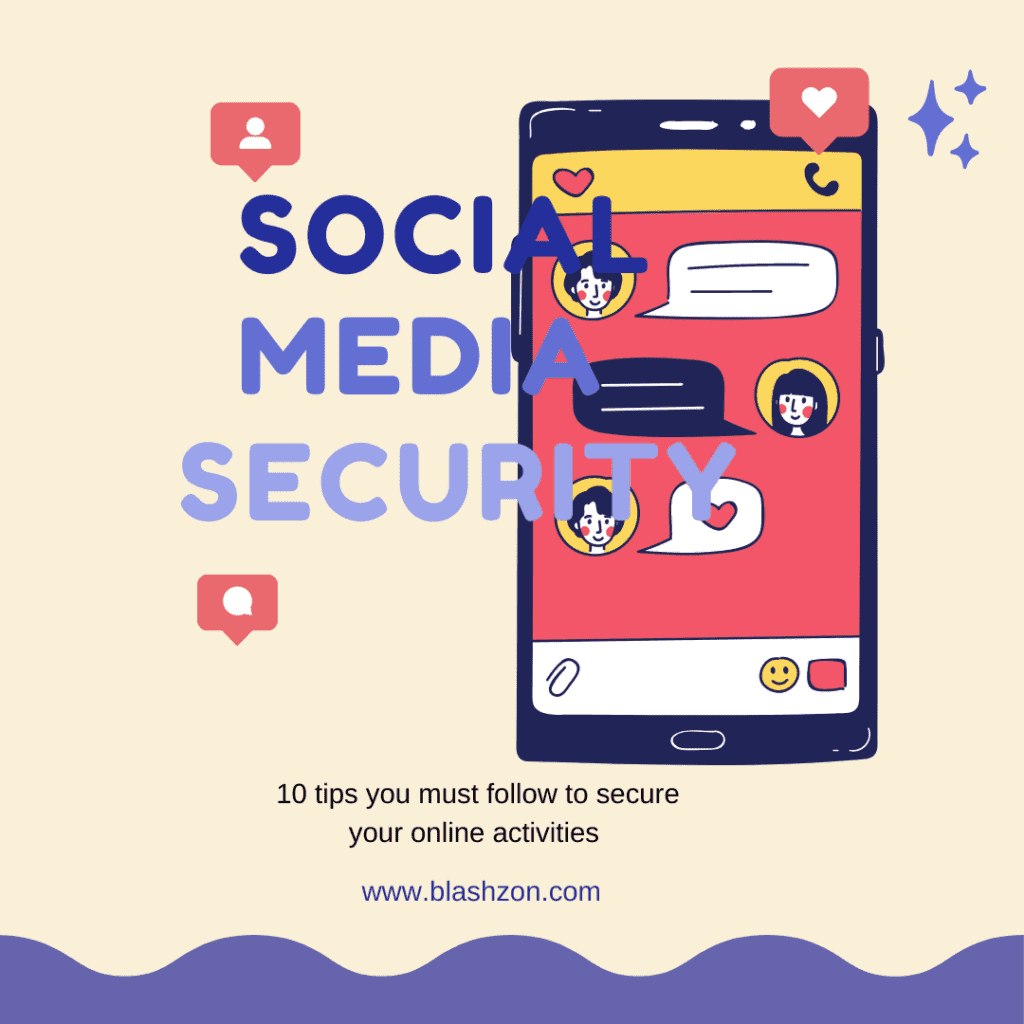Social Media Security: Top 10 Tips You Must Follow
In today’s interconnected world, social media has become an integral part of our lives, allowing us to connect, share, and communicate with others on a global scale. However, as we immerse ourselves in the digital realm, it is essential to recognize the importance of social media security and safeguarding our online presence.
“Social Media Security: Safeguarding Your Online Presence” delves into the realm of digital self-protection, equipping you with the knowledge and strategies to navigate the potential risks and vulnerabilities associated with social media platforms. In this ever-evolving landscape, we explore the common threats, such as identity theft, data breaches, privacy infringements, and cyberbullying, that can compromise your personal and professional life
Through practical tips, expert advice, and proactive measures, we empower you to take control of your social media security. From understanding privacy settings and managing access permissions to recognizing phishing attempts and cultivating a responsible digital footprint, this guide empowers you to harness the benefits of social media while minimizing the inherent risks.
Join us on this journey as we explore the tools and techniques to fortify your online presence, enabling you to navigate the social media landscape with confidence, authenticity, and peace of mind.

Set Strong and Unique Passwords:
One of the fundamental steps in securing your social media accounts is to use strong and unique passwords. Avoid using common passwords or reusing the same password across multiple platforms. Explore the option of utilizing a password manager to create and securely store strong, intricate passwords for enhanced security. Remember to update your passwords periodically for added security.
Enable Two-Factor Authentication (2FA):
Implementing Two-Factor Authentication provides an additional level of security to fortify the protection of your social media accounts. By enabling 2FA, you will require a second form of verification, such as a unique code sent to your mobile device, in addition to your password, to access your accounts. By taking these precautions, you add an extra layer of protection against unauthorized access, reducing the risk of compromise even if your password is somehow compromised.
Manage Privacy Settings:
Regularly review and adjust the privacy settings of your social media accounts. Exercise control over the visibility of personal information by limiting its accessibility to the public or individuals outside your circle of friends. Customize your privacy preferences to control who can see your posts, photos, and personal details. Be cautious about sharing sensitive information publicly, as it can be exploited by malicious individuals.
Be Selective with Friend Requests and Connections:
Exercise caution when accepting friend requests or connecting with others on social media. Verify the authenticity of the profiles and ensure you know the person or have mutual connections before accepting requests. Be wary of fake or suspicious accounts, as they may be attempting to gather information or engage in fraudulent activities.
Think Before You Share:
Exercise caution when it comes to the information you disclose on social media platforms. Always consider the potential consequences before sharing personal details such as your home address, phone number, or financial information. Avoid sharing travel plans or vacation pictures in real-time, as it can make you vulnerable to physical threats or burglaries. Remember, once something is posted online, it can be challenging to remove completely.
Be Wary of Phishing Attempts:
Phishing attacks targeting social media users are becoming increasingly common. Be cautious of suspicious emails, messages, or links that ask for your login credentials or personal information. Legitimate social media platforms will never ask you to provide sensitive information through email or direct messages. Verify the source and check for signs of phishing, such as misspelled URLs or grammatical errors.
Regularly Update Apps and Devices:
Ensure that you regularly update your social media apps and devices to incorporate the latest security patches and software upgrades. These updates often include bug fixes and security enhancements that can protect your accounts from known vulnerabilities and exploits. Set up automatic updates whenever possible to ensure you are always running the latest versions.
Review Third-Party App Permissions:
Many social media platforms offer integration with third-party applications. Periodically review the permissions granted to these apps and revoke access for those you no longer use or trust. Limit the amount of personal information shared with third-party apps and ensure they have a legitimate need for the access they request.
Be Mindful of Public Wi-Fi:
Exercise caution when accessing social media accounts on public Wi-Fi networks. Public Wi-Fi networks can be vulnerable to attacks, and malicious actors can intercept your data. Whenever possible, use a Virtual Private Network (VPN) to encrypt your connection and ensure secure browsing.
Monitor Your Accounts:
Make it a habit to consistently monitor your social media accounts for any signs of unusual or suspicious activity. Check for unrecognized logins, unfamiliar posts, or changes in account settings. Report any suspicious or unauthorized activities to the platform’s support team immediately. Prompt action can help mitigate potential damage and prevent further compromise.
Conclusion:
Protecting our online presence on social media requires a proactive approach and adherence to best practices. By implementing these tips, we can significantly enhance the security of our social media accounts and enjoy a safer and more secure online experience. Remain alert, stay updated, and make safeguarding your digital security a top priority.
Protecting Your Financial Information: Best Practices for Secure Online Shopping.